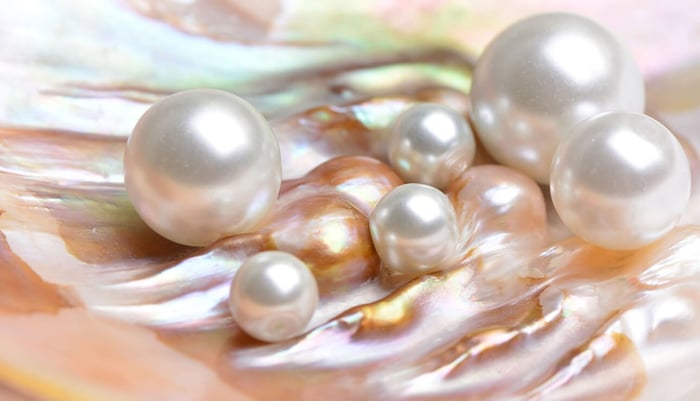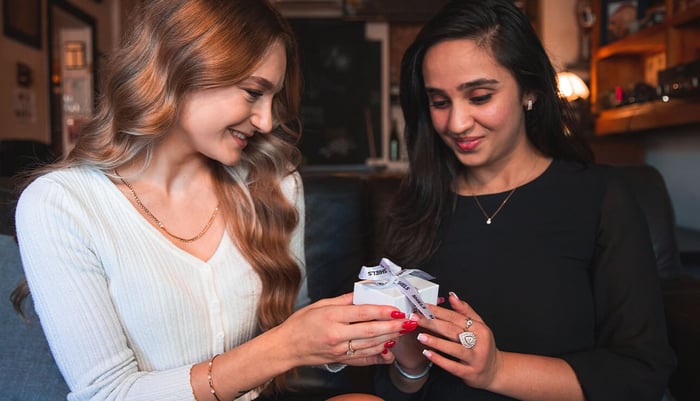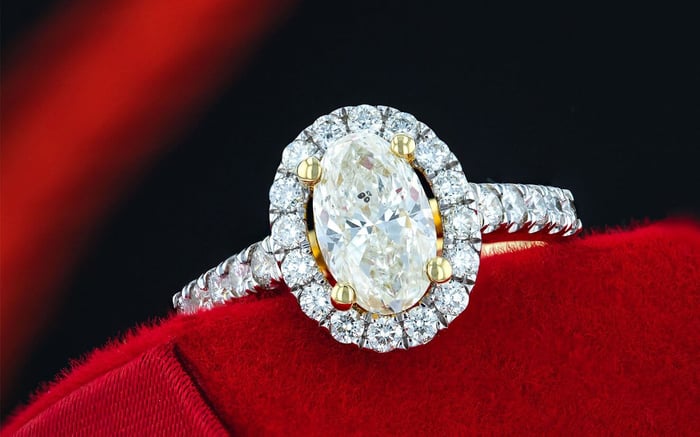Diamonds may be a girl's best friend, but pearl jewellery has captured the hearts of many. With its vintage aesthetic and stunning lustre, a pearl is completely unique. Pearl necklaces, pearl earrings and pearl bracelets are beautiful items of jewellery that elevate any outfit.
But can you tell the difference between a top-of-the-line high-quality pearl and a plain old fake one? While experts say that it sure can be difficult, there are some tell-tale signs that will determine the difference.
Pearls are so revered because they are the only gemstone that is produced by a living creature, giving them another element of uniqueness that you can’t get anywhere else.
If you’re paying top dollar for pearls, you want to make sure that you are getting the real deal.
Overview:
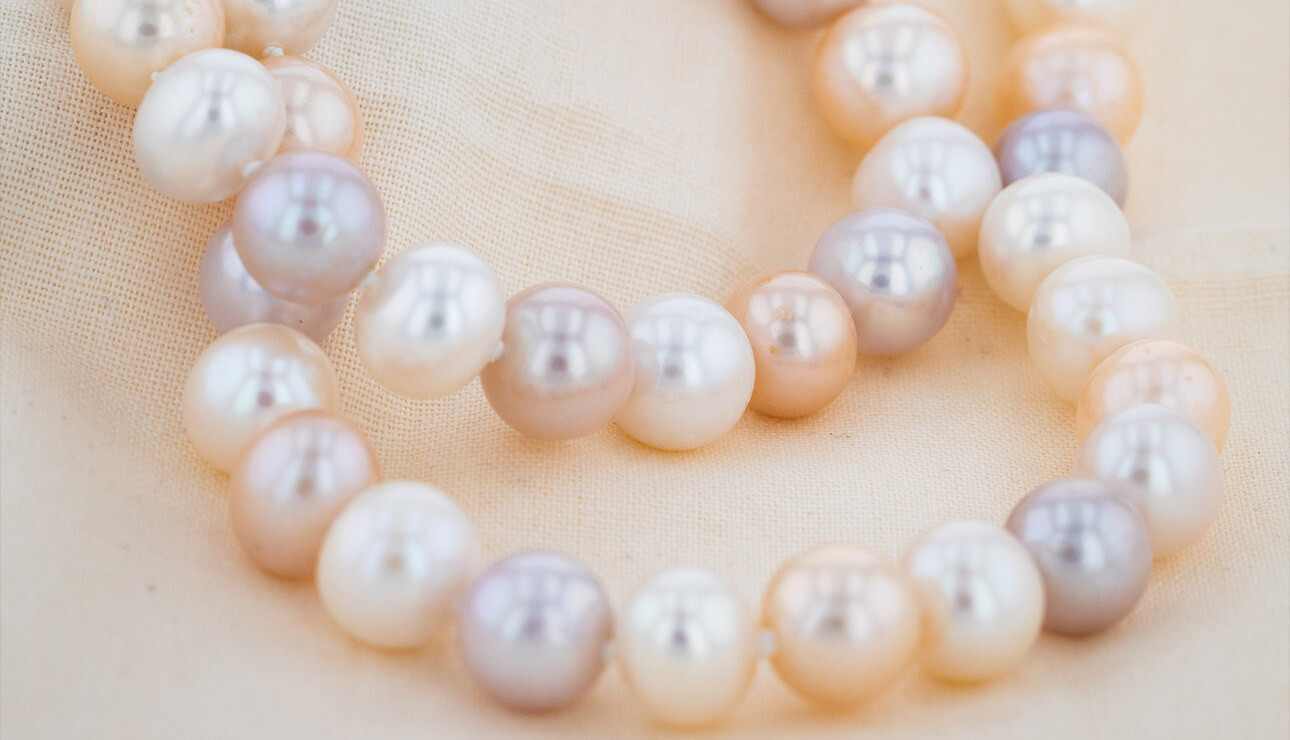
What is a real pearl?
A real pearl is a natural gemstone that forms inside the shells of certain mollusks, such as oysters and mussels, in response to irritants such as a grain of sand or parasite. The mollusk produces layers of nacre, a substance made of calcium carbonate and a protein called conchiolin, around the irritant to protect its soft body. Over time, this process forms a hard, lustrous sphere known as a pearl.
Real pearls come in various shapes, sizes, colours, and qualities, and their value is determined by factors such as size, lustre, colour, surface quality, and rarity. Natural pearls are highly prized but so can also be quite rare and expensive.
Cultured pearls are produced by intentionally introducing a nucleus into a mollusk and then farming it to produce a pearl. These pearls are more readily available and can offer many of the same beauty and value benefits as natural pearls at a more affordable price. Cultured pearls are still considered real pearls.

What is a fake pearl?
A fake pearl is an imitation of a natural pearl, created to resemble the appearance, lustre, and shape of a real pearl but made from materials other than mollusk shells. Fake pearls are often made from materials such as glass, plastic, or ceramic and are coated with a substance to give them a shiny appearance. Some fake pearls are even made to look like freshwater or saltwater pearls, and are sometimes referred to as "imitation pearls." Fake pearls are much less valuable than natural pearls and are often used for costume jewellery or as a less expensive alternative to the real thing.
How To Tell If Pearls Are Real
Tooth Test
The tooth test is a popular method for determining whether a pearl is real. Lightly rub it against the front of your tooth. If natural or cultured, rather than simulated, the pearl should feel gritty. If it is smooth, then it’s likely the pearl is not legit.
Look For Irregularities
Each pearl has slight differences and irregularities that are tell-tale signs that it is in fact real. In a strand of pearls, if every stone looks completely identical in terms of size, shapes, colour and surface characteristics, then it is likely that they are simulated. Even the highest quality pearls have unique features. Not only this, but cultured and natural pearls reflect light differently from fake ones which have a glassy finish.
Feel The Weight
Hold the pearls in your hand and consider their weight. Real pearls will feel heavier to the touch, while plastic beads will feel as light as a feather. Glass beads may have some weight to them, however, you can also assess the temperature to help you to make a better judgement.
Touch & Temperature
For the first couple of seconds that you hold a real pearl, it will feel cool against the warmth of your fingertips. By taking note of how cool the pearl feels in your hand, you can get a good idea about whether it is real. Fake plastic pearls are the same temperature as room temperature, therefore, you won’t feel any coolness when you touch them. On the other hand, glass beads can feel cool to the touch to begin, however, generally it takes them longer to warm up against your skin.
Check The Drill Holes
For pearls to be used to create pearl necklaces and pearl bracelets, they are usually threaded on a string. In order to do this, the gems are drilled with a tunnel that goes from one side of the pearl to the other. This gives you a great opportunity to determine the legitimacy of the stone. Typically real pearls have very small drill holes compared to fake beads. You can also often see flakes of paint or chipped coating at the drill site, which will likely peel off to reveal the fake bead.
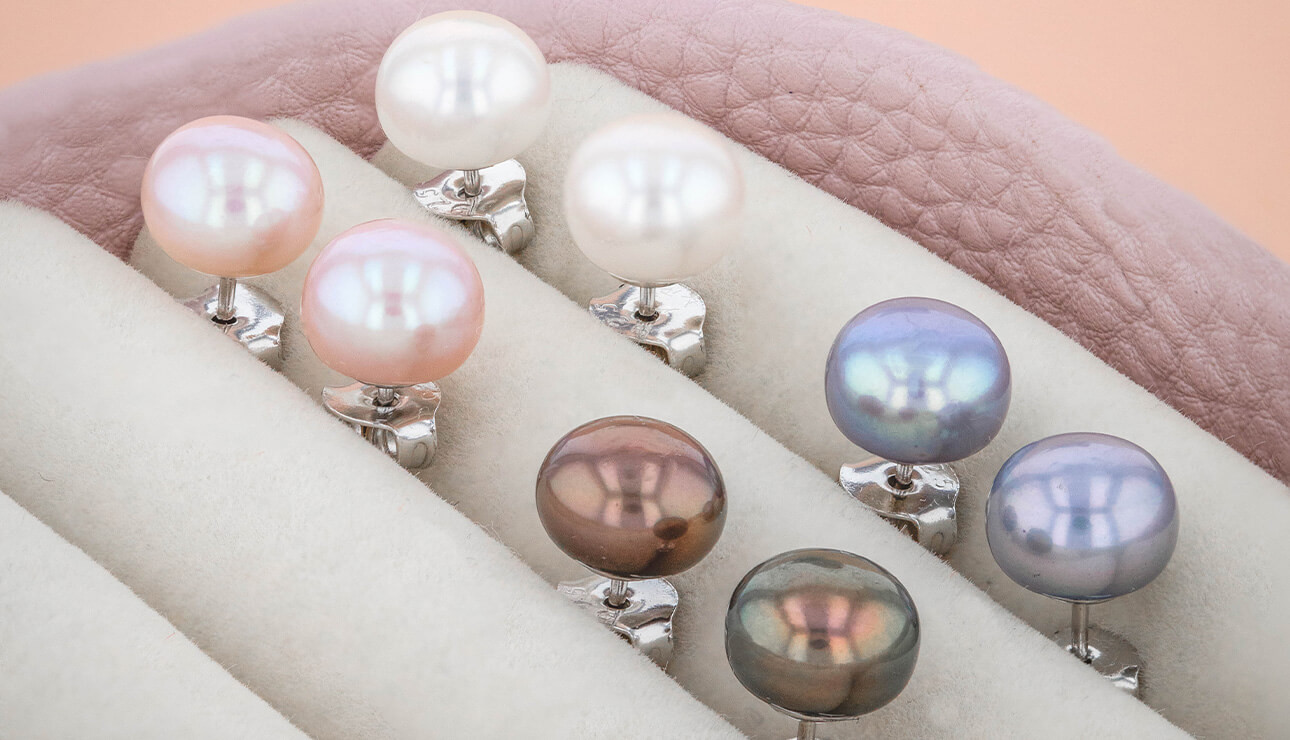
Pearls are a beautiful gemstone that is completely different to any other! However, it’s important to assess whether your pearl is real or not, as some imitation pearls are especially fooling. Each of the tips discussed should be used in conjunction with each other to form a judgement.
If you are still unsure, you can always take your jewellery in-store to a professional jeweller who will be able to tell you for sure how real your pearls are.

